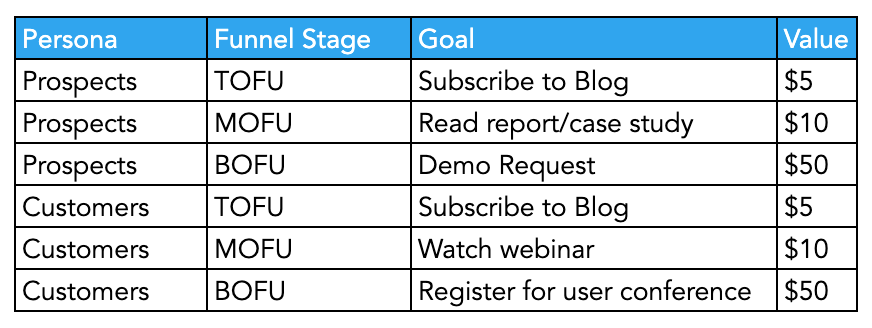Comprehensive Checklist of What Data Is Google Analytics Goals Unable to Track
Comprehensive Checklist of What Data Is Google Analytics Goals Unable to Track
Blog Article
Demystifying Google Analytics Limitations: Discover What Data Goals Can not Track
In the world of digital analytics, Google Analytics stands as a powerful device that supplies useful insights into website efficiency and individual habits. From the details of customer interaction with vibrant material to the intricacies of cross-device user journeys, these constraints dropped light on areas that may continue to be covered from typical analytics viewpoints.

Customer Communication With Dynamic Material
Customer interaction with vibrant web content plays an important function in understanding customer habits on internet sites and maximizing the total individual experience. Dynamic web content describes components on a web page that can change without the need for a full page reload. This includes interactive components such as pop-ups, sliders, kinds, and videos that react to customer actions in real-time. By tracking customer communications with dynamic web content, internet site owners can obtain valuable insights right into individual engagement, preferences, and habits.
Google Analytics uses numerous tools to track user interactions with dynamic content, such as occasion tracking and virtual pageviews. Occasion monitoring allows you to monitor details individual activities, like clicking a button or seeing a video clip, providing information on how customers engage with dynamic components. Online pageviews can be utilized to track communications that do not bring about a new web page lots, offering a detailed sight of customer interaction with dynamic material. By assessing this information, web site owners can make educated decisions to boost user experience and drive conversions.
Cross-Device User Journeys
Exactly how can modern analytics devices track the complicated courses users take across numerous devices in their on-line journeys? Cross-device customer journeys provide a substantial difficulty for monitoring and assessing user habits accurately. As users engage with sites or applications making use of numerous devices such as smart devices, tablets, and desktops, it becomes crucial to understand just how they move between these systems to enhance individual experience properly.
Google Analytics faces restrictions in tracking cross-device user journeys due to privacy issues and technological constraints - what data is google analytics goals unable to track. While it can give insights into specific devices' interactions, tracking a seamless user journey across multiple gadgets continues to be a difficulty. This restriction can lead to insufficient data and fragmented user understandings, making it hard for businesses to create a unified view of the customer trip
To resolve this problem, services can use sophisticated analytics devices that supply cross-device tracking capacities, allowing them to obtain an extra alternative understanding of user behavior. By leveraging these tools, organizations can connect the space in tracking cross-device customer trips and maximize their digital strategies for a seamless customer experience.
Offline Conversions and Attribution
As companies navigate the challenges of tracking cross-device customer journeys, an additional pivotal aspect to think about is the world of offline conversions and acknowledgment in the realm of information analytics. While Google Analytics gives beneficial understandings into online user habits, it falls short when it involves tracking conversions that take place offline. This restriction poses a substantial challenge for businesses that have both online and offline sales channels.
Offline conversions, such as purchases made in physical shops or with phone call facilities, are necessary to comprehending the full customer trip. Without the ability to connect these offline conversions to details on the internet communications, services may struggle to properly measure the image source impact of their electronic advertising and marketing initiatives.
To address this void, organizations can check out different remedies such as incorporating CRM systems with online analytics devices or making visit the site use of distinct promotion codes that can be mapped back to on the internet projects. By linking the gap between online and offline data, businesses can obtain a more detailed understanding of their clients' actions and enhance their general advertising and marketing strategies.
Person User Recognition
In the world of information analytics, the capability to properly recognize specific users across numerous online touchpoints is an essential difficulty for services looking for to customize and optimize their advertising approaches. While Google Analytics provides useful understandings right into customer behavior and communications, it falls brief in enabling the recognition of certain individuals as a result of personal privacy problems and technical restrictions. Google Analytics utilizes distinct identifiers such as cookies to track user sessions and behavior, however these do not correspond to determining private users in an individual feeling.

Information From Secure Pages
In spite of the boosting occurrence of secure pages on websites, getting data from these encrypted sources provides an unique difficulty for digital analytics systems like Google Analytics. Secure pages, suggested by HTTPS in the URL, secure information exchanged in between the customer's web browser and the website's server to make certain privacy and protection. While this file encryption is vital for securing delicate information, it likewise postures constraints for tracking individual actions and gathering analytics data.
Google Analytics deals with barriers in accumulating comprehensive details from secure pages because of the security protocols in area. Therefore, specific information factors such as reference sources, keyword searches, and also some user interactions might not be totally recorded when users access a website with a safe link. This constraint can influence the precision and efficiency of the data evaluation, resulting in gaps in comprehending individual habits and preferences on protected web pages.
To browse this difficulty, digital experts may need to discover different tracking techniques or utilize various other tools particularly created to gather understandings from safe and secure pages. By adjusting strategies to fit these limitations, businesses can still derive important analytics in spite of the restrictions provided by encrypted connections.
Conclusion
Finally, Google Analytics has constraints in tracking customer communication with dynamic content, cross-device user trips, offline conversions, specific customer identification, and information from safe pages. These restrictions hinder an extensive understanding of user actions and might result in gaps in information analysis. Despite its beneficial understandings, Google Analytics may not provide a full photo of individual interaction throughout numerous touchpoints. It is essential for organizations to be knowledgeable about these limitations and think about auxiliary devices for a more alternative view of their data.
User interaction with dynamic content plays a crucial role in understanding customer habits on websites and optimizing the general customer experience. By tracking individual interactions with vibrant web content, website owners can obtain important insights right into user interaction, choices, and behaviors.
Google Analytics uses distinct identifiers such as cookies to track customer sessions and behavior, however these do not relate to recognizing individual customers in a personal sense.
As an outcome, particular data factors such as referral resources, keyword searches, and also some user interactions may not be totally recorded when individuals access a site with a safe link.In verdict, Google Analytics has limitations in tracking customer interaction with dynamic material, cross-device individual trips, offline conversions, private customer recognition, and data from safe and secure pages.
Report this page